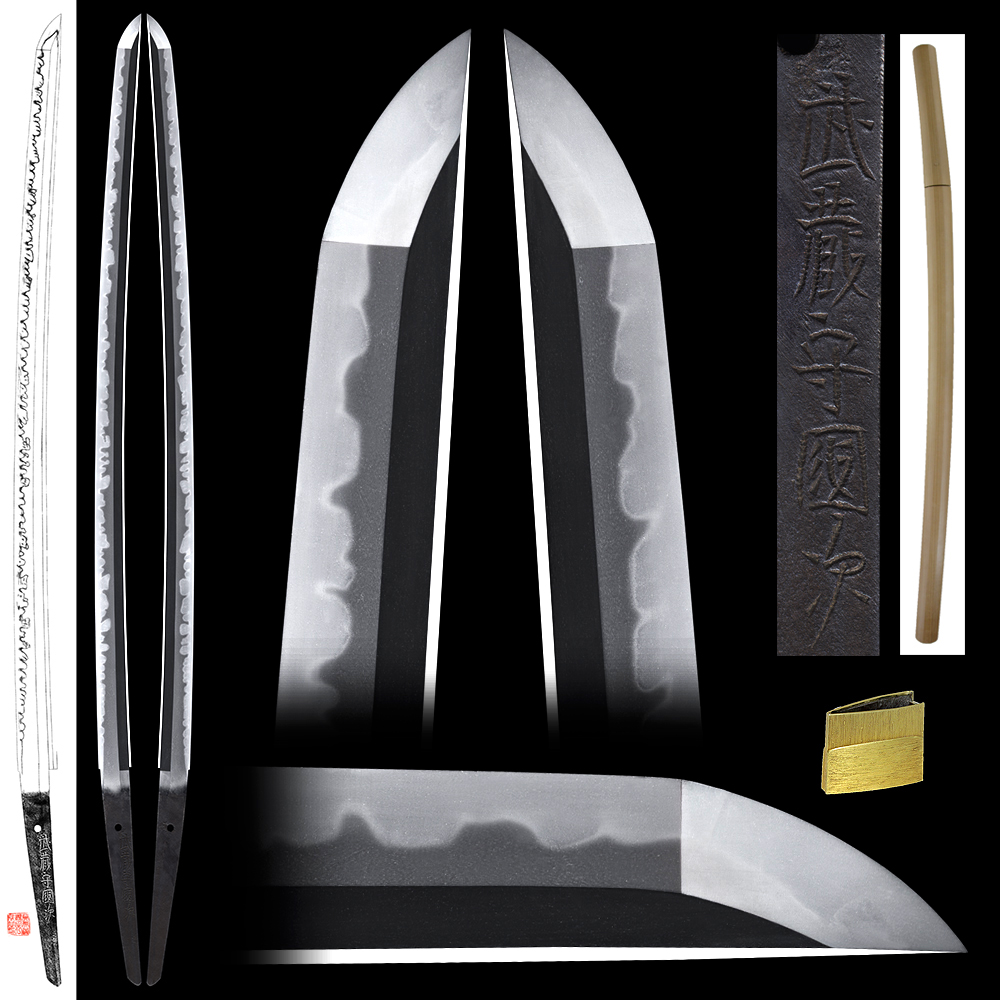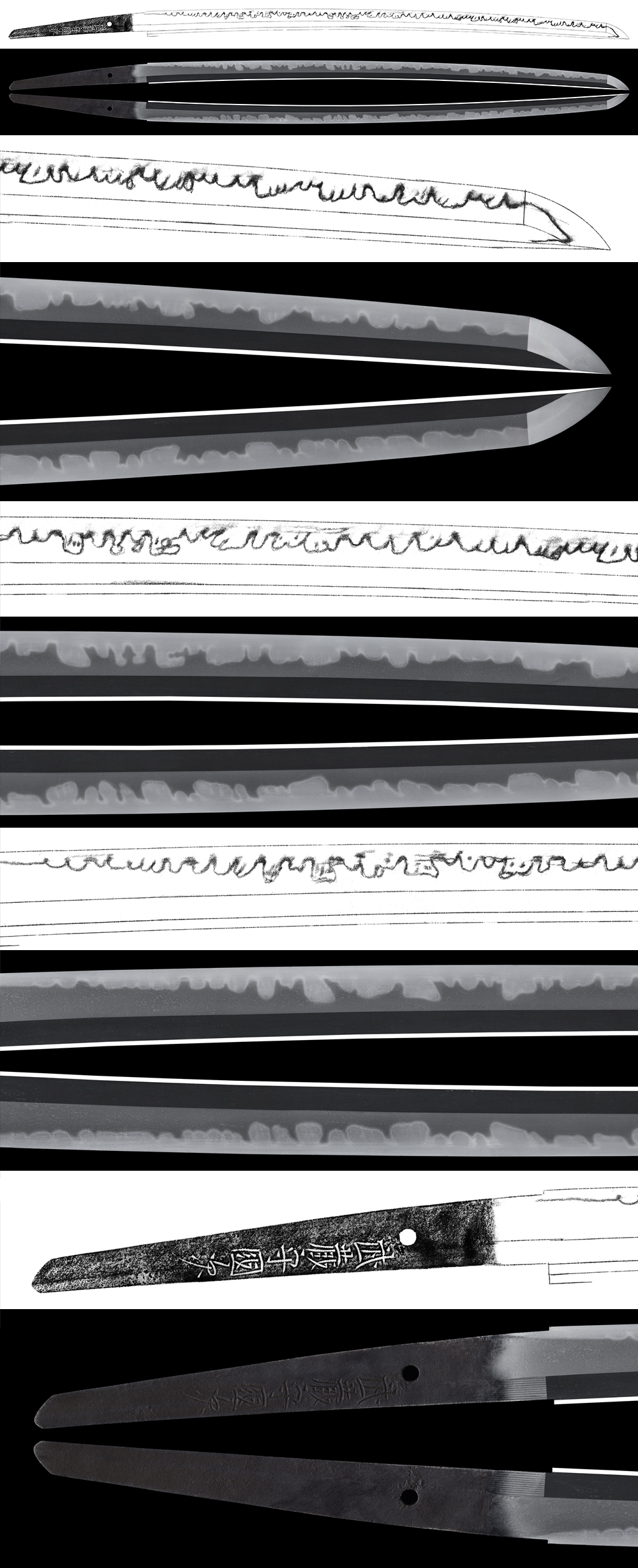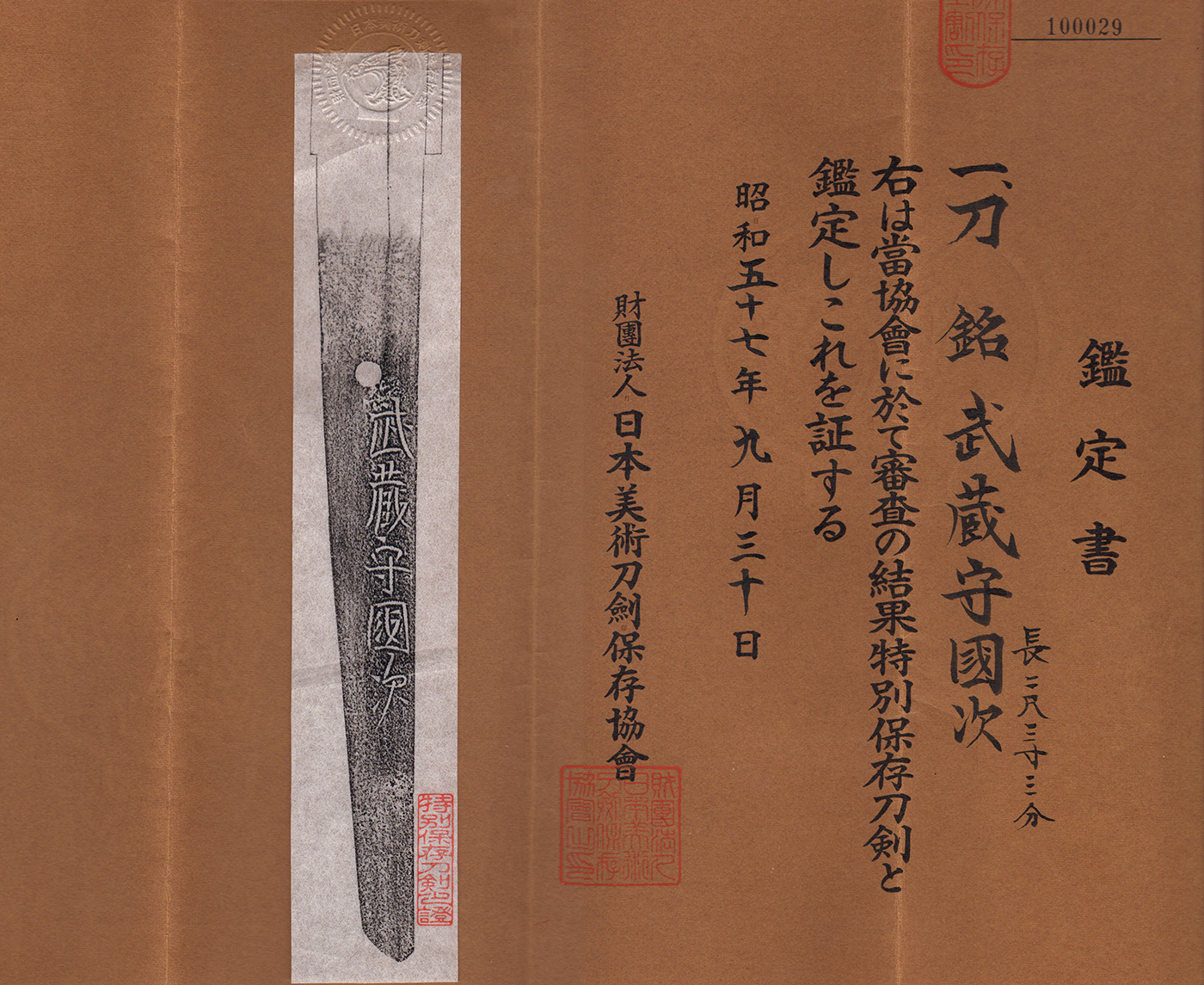Katana: Musashi Kami Kunitsugu
2017/01/28
Katana in Shirasaya with Koshirae (NBTHK Tokubetsu Hozon Paper)
Signature : Musashi Kami Kunitsugu
(We divide 4 sections for each sword as Saijo saku, Jojo saku, Jo saku and regular saku)
This blade belongs to Jojo saku ranking.
The blade is polished
Habaki : Gold foiled double Habaki
Blade length : 70.7 cm or 27.83 inches.
Sori : 1.2 cm or 0.47 inches.
Mekugi : 2
Width at the hamachi : 3.04 cm or 1.19 inches.
Width at the Kissaki : 2.10 cm or 0.82 inches.
Kasane : 0.68 cm or 0.26 inches.
Era : Edo Period around Kanei era. (around 1624~1645)
Shape : Wide and thick blade with slightly shallow curve. Kissaki is long ended nice piece.
Jitetsu : Koitame-hada well grained with Jinie attach. This is traditional Osaka Jigane.
Hamon : Suguha starts around Hamachi. It turns to Gunome-midare and then fist-shape Choji (Kobushi Choji).
Ashi well attched. There are many Sunagashi and Kinsuji working. Boshi is round point style.
Special feature : Musashi Kami Kunitsugu is a son of first generation Kawachi Kami Kunisuke.
His first signature was Kunimitsu. Then he changed to Kobayashi Musashi Kami Fujiwara Kunitsugu, Sesshu Ju Musashi Daijyo Fujiwara Kunitsugu, and then Musashi Kami Kunitsugu. This sword is very similar to second generation Kawachi Kami Kunisuke.
Hamon starts from Suguha, then becomes Gunome-midare, then wild Kobushi Choji-midare.
Very long Kissaki let us know that this blade was forged at Kannei era.
He has left only few swords of his own because he was helping the second generation Kunisuke for most of his carrier.
This sword is a true master piece of Kunitsugu. It is no less quality than second generation Kunisuke. There are gorgeous
Kobushi Choji Hamon and polish is so excellent. We recommend you this sword.
Koshirae : It is elegant fine condition Uchigatana Koshirae.
Tsuba : Wild geese design is engraved open work on round shape iron Tsuba.
Fuchikashira : Noble lady and flowers engraved on Shakudo Nanakoji plate with gold and silver inlayed.
Saya : Black wrinkle pattern Saya. There are some minor dents but not so serious.
Menuki : Flower design is engraved on Shakudou plate with gold inlayed.
Kojiri: Arabesque engrced on iron plate.
Historical background : During this blade was forged, Tokugawa Iemitsu consolidated Edo shogunate.
At Kanei 14th (1637), Shimabara Rebellion occurred. At those ages, Christianity was prohibited by shogunate. Christened peasants
lead by Amakusa Shiro rose in rebellion against their landlord armed with weapons. After the suppression, period of national isolation has arrived to Japan.
NBTHK Tokubetsu Hozon Paper
Aoi Art estimation paper : whole Oshigata.





